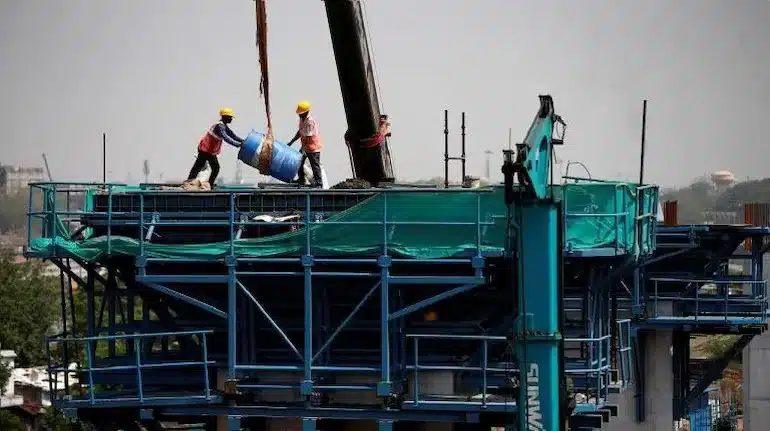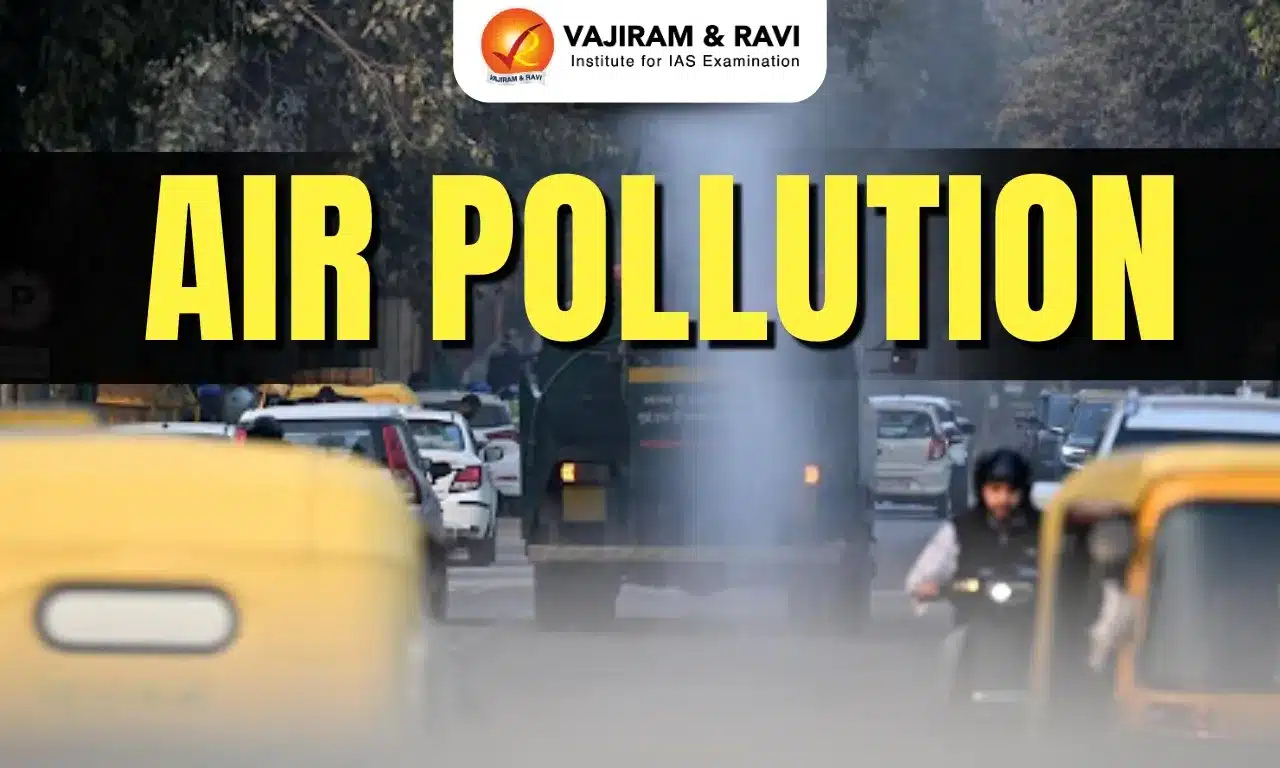What’s in today’s article?
- Why in News?
- Some Key Economic Concepts
- Key Takeaways from India’s Q4 GDP Data
Why in News?
- The Indian economy grew at a faster-than-expected rate of 7.8% year-on-year in the January-March (2024) quarter, driven by robust growth in the manufacturing sector.
- For the full year 2023-24 (FY24), India’s Real GDP is estimated to have grown at a robust 8.2%.
Some Key Economic Concepts:
- Gross Domestic Product (GDP): It is defined as the total monetary or market value of all the finished goods and services produced within a country’s borders in a specific time period.
- It measures the value of total output in the economy by tracking the total demand.
- GDP = C + I + G + NX
- Consumption (C): The biggest engine (56% of all GDP) is consumption demand from private individuals, technically known as Private Final Consumption Expenditure (PFCE).
- Investment (I): The second-biggest engine (32%) is the investment demand generated by private sector businesses, also known as Gross Fixed Capital Formation (GFCF).
- Government (G): The third engine (11%) is the demand for goods and services generated by the government and is known as the Government Final Consumption Expenditure (GFCE).
- Net Exports (NX): This is calculated by subtracting Indian imports from the Indian exports.
- Nominal vs Real GDP:
- Nominal GDP (GDP calculated using current market prices) is the actual observed variable. However, Real GDP (GDP calculated using constant 2011-12 prices, after taking away the effect of inflation) is a derived metric.
- Real GDP = Nominal GDP – Inflation Rate. Inflation is the rate at which the value of a currency is falling and consequently the general level of prices for goods and services is rising.
- From the Budget-making perspective, nominal GDP is important. However, from the perspective of the common people, real GDP is what matters.
- Gross Value Added (GVA): It examines the amount of value added (in monetary terms) in various productive areas of the economy.
- It tracks the total output in the economy by looking at the total supply.
- GDP vs GVA:
- GDP = (GVA) + (Taxes earned by the government) – (Subsidies provided by the government).
- The difference between these two absolute figures will reveal the government’s role in the process.
- For example,
- GDP > GVA, if the government generated more money from taxes than it spent on subsidies.
- GVA > GDP, if the government gave subsidies in excess of its tax collections.
- Fiscal deficit:
- A fiscal deficit is a shortfall in a government’s income compared with its spending.
- It is essentially a marker of the health of government finances and tracks the amount of money that a government has to borrow from the market to meet its expenses.
Key Takeaways from India’s Q4 GDP Data:
- India is the fastest-growing major economy worldwide:
- The Indian government has revised the country’s economic growth for the 2023/24 fiscal year to 8.2%, making India as the fastest-growing major economy worldwide.
- This figure is higher than the previous estimate of 7.6% made by the National Statistical Office (NSO), despite the agricultural sector’s poor performance.
- Although real GDP remains approximately 7.5% below its pre-pandemic trajectory, domestic strengths and a focused policy approach have set the economy on a robust growth path.
- Value of GDP:
- The real GDP is projected to reach Rs 173.82 lakh crore in the fiscal year 2023-24, higher than Rs 160.71 lakh crore for the previous fiscal year 2022-23.
- Estimates for nominal GDP show a 9.6% growth to ₹295.36 lakh crore in FY24 from ₹269.50 lakh crore in FY23.
- Growth rate in GVA terms:
- In comparison to 6.8% in the prior quarter and 6% in Q4 FY23, the GVA growth in January-March (2024) was 6.3%.
- For the full financial year FY24, GVA growth was recorded at 7.2% as against 6.7 per cent in FY23.
- The wide divergence between GVA and GDP rates are being seen on account of a sharp jump in net taxes, primarily indicating higher taxes and lower subsidies outgo in the last quarter.
- Performance of the different sectors:
- The manufacturing sector witnessed a significant acceleration in GVA growth, reaching 8.9% in the March quarter, a notable increase from the 0.9% growth recorded in the same quarter of the previous year.
- Mining GVA growth also saw an uptick, rising to 4.3% in the fourth quarter from 2.9% in the corresponding quarter of the previous fiscal.
- The construction sector experienced robust growth, expanding by 8.7% in the quarter, surpassing the 7.4% growth observed in the same period of 2022-23.
- The agriculture sector saw a deceleration in growth, slowing down to 0.6% from 7.6% in the previous year.
- In the services sector, GVA growth in trade, hotel, transport, communication, and services related to broadcasting moderated to 5.1% in the fourth quarter, compared to a growth of 7% a year ago.
- Fiscal deficit:
- The Central government’s fiscal deficit during 2023-24 at 5.6% of the GDP was better than previous estimates of 5.8% on account of higher revenue realisation and lower expenditure.
- In actual terms, the fiscal deficit was ₹16.53 lakh crore in 2023-24.
- As per the Fiscal Responsibility & Budget Management (FRBM) Act, the government plans to achieve a fiscal deficit of 4.5% in 2025-26.
● Investment and expenditure growth: While PFCE growth remains sluggish at 4.0%, the primary demand-side impetus is coming from GFCF, which has grown by 9.0%.
Q.1. When will India become a $5 trillion economy?
India is expected to become the third-largest economy in the world with a GDP of $5 trillion in the next three years and touch $7 trillion by 2030 on the back of continued reforms.
Q.2. What is the National Logistics Policy (NLP) of India?
NLP was launched in 2022 with the aim to address logistics cost inefficiency by laying down an overarching framework for developing the entire logistics ecosystem. This would boost economic growth, provide employment opportunities, and make Indian products more competitive in the global market.
Source: GDP growth surges to 8.2% on manufacturing gains | THE HINDU | TOI
Last updated on December, 2025
→ Check out the latest UPSC Syllabus 2026 here.
→ Join Vajiram & Ravi’s Interview Guidance Programme for expert help to crack your final UPSC stage.
→ UPSC Mains Result 2025 is now out.
→ UPSC Notification 2026 is scheduled to be released on January 14, 2026.
→ UPSC Calendar 2026 is released on 15th May, 2025.
→ The UPSC Vacancy 2025 were released 1129, out of which 979 were for UPSC CSE and remaining 150 are for UPSC IFoS.
→ UPSC Prelims 2026 will be conducted on 24th May, 2026 & UPSC Mains 2026 will be conducted on 21st August 2026.
→ The UPSC Selection Process is of 3 stages-Prelims, Mains and Interview.
→ UPSC Result 2024 is released with latest UPSC Marksheet 2024. Check Now!
→ UPSC Prelims Result 2025 is out now for the CSE held on 25 May 2025.
→ UPSC Toppers List 2024 is released now. Shakti Dubey is UPSC AIR 1 2024 Topper.
→ UPSC Prelims Question Paper 2025 and Unofficial Prelims Answer Key 2025 are available now.
→ UPSC Mains Question Paper 2025 is out for Essay, GS 1, 2, 3 & GS 4.
→ UPSC Mains Indian Language Question Paper 2025 is now out.
→ UPSC Mains Optional Question Paper 2025 is now out.
→ Also check Best IAS Coaching in Delhi

















